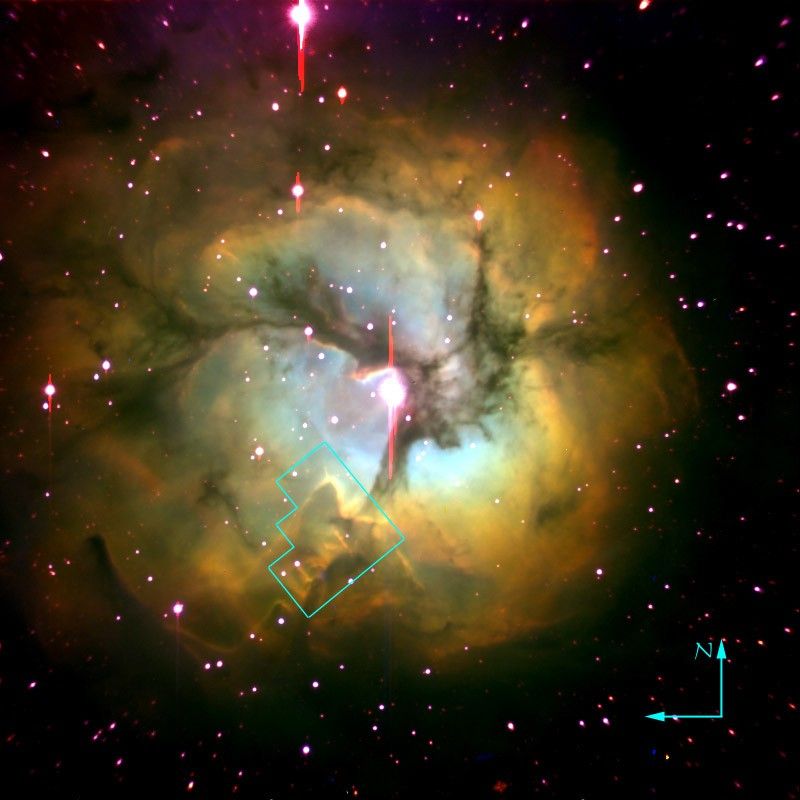1 min read
Ground-based Image of the Trifid Nebula

Ground (Palomar) image of the Trifid Nebula with location of WFPC2 field
About the Object
- R.A. PositionR.A. PositionRight ascension – analogous to longitude – is one component of an object's position.18h 2m 22.99s
- Dec. PositionDec. PositionDeclination – analogous to latitude – is one component of an object's position.18h 2m 22.99s
- ConstellationConstellationOne of 88 recognized regions of the celestial sphere in which the object appears.Sagittarius
- DistanceDistanceThe physical distance from Earth to the astronomical object. Distances within our solar system are usually measured in Astronomical Units (AU). Distances between stars are usually measured in light-years. Interstellar distances can also be measured in parsecs.Approximately 9,000 light-years (2800 parsecs)
About the Data
- InstrumentInstrumentThe science instrument used to produce the data.Palomar Observatory
- Object NameObject NameA name or catalog number that astronomers use to identify an astronomical object.Trifid Nebula, M20, NGC 6514
- Object DescriptionObject DescriptionThe type of astronomical object.Emission Nebula; HII Region
- Release DateNovember 9, 1999
- Science ReleaseThe Trifid Nebula: Stellar Sibling Rivalry
- CreditJeff Hester (Arizona State University)
Related Images & Videos

The Trifid Nebula: Stellar Nursery Torn Apart By Radiation From Nearby Star
This NASA Hubble Space Telescope image of the Trifid Nebula reveals a stellar nursery being torn apart by radiation from a nearby, massive star. The picture also provides a peek at embryonic stars forming within an ill-fated cloud of dust and gas, which is destined to be eaten...

Star Birth in the Trifid Nebula
HUBBLE IDENTIFIES SOURCE OF ULTRAVIOLET LIGHT IN AN OLD GALAXY Video File October 26, 1999 Contents 1) VIDEO ZOOM INTO M32: Video sequence begins with a ground-based image of M32 (seen just above the large central galaxy M31), ZOOM to ground-based image of M32, continue the...
Share
Details
Last Updated
Aug 17, 2025
Contact
Media
Claire Andreoli
NASA’s Goddard Space Flight Center
Greenbelt, Maryland
claire.andreoli@nasa.gov































